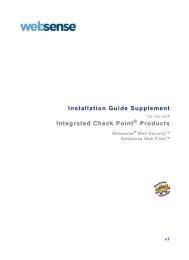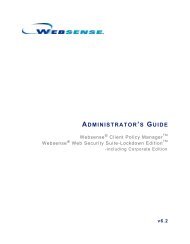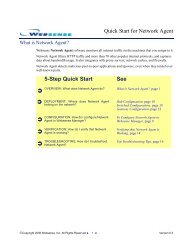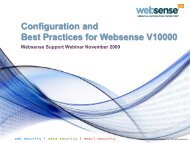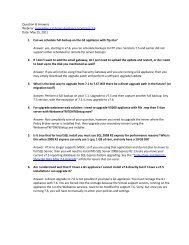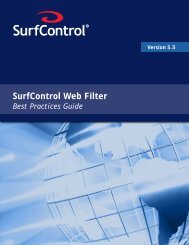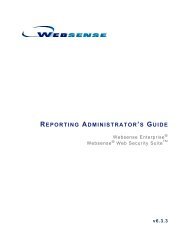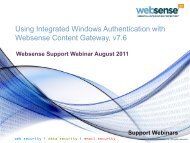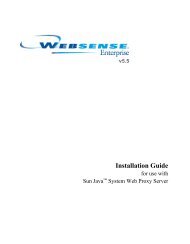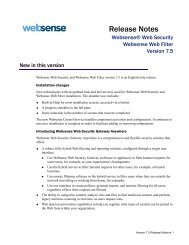You also want an ePaper? Increase the reach of your titles
YUMPU automatically turns print PDFs into web optimized ePapers that Google loves.
Chapter 2: Establishing Filtering Policies4. To apply the selected policy action to the whole protocol group, clickApply to Entire Group.5. Click OK.6. Click Save Changes above the navigation tree.If the protocol filter is already included in a policy, the new actions areenforced for the clients governed by the policy. If the protocol filter is not partof any policy, it must be added to a policy before its actions are enforced. SeeEditing a policy, page 40, and Assigning a policy to clients, page 42, for moreinformation.Working with policiesCustom policies let you apply more or less restrictive filtering for specificusers or computers (clients) without affecting filtering for the entireorganization.1. Add a new policy (see Adding a policy, on this page).2. Edit the policy to define its filtering restrictions (see Editing a policy,page 40).3. Add a client (see Working with clients, page 41).4. Assign the new policy to the client (see Assigning a policy to clients, page42).Adding a policyWhen you create a new policy, you can either use an existing policy as amodel or start from scratch.1. Right-click in the navigation tree, and then select Add Policy. The AddPolicy dialog box appears.2. Enter a unique name (1-25 characters) for the new policy.3. Click OK. The Policy Model dialog box appears.4. Select a policy from the list to use as a template, or select Create emptypolicy.5. Click OK. The new policy is added to the Policies node of the navigationtree and selected.<strong>Websense</strong> Express User <strong>Guide</strong> 39



